lens
Campus News
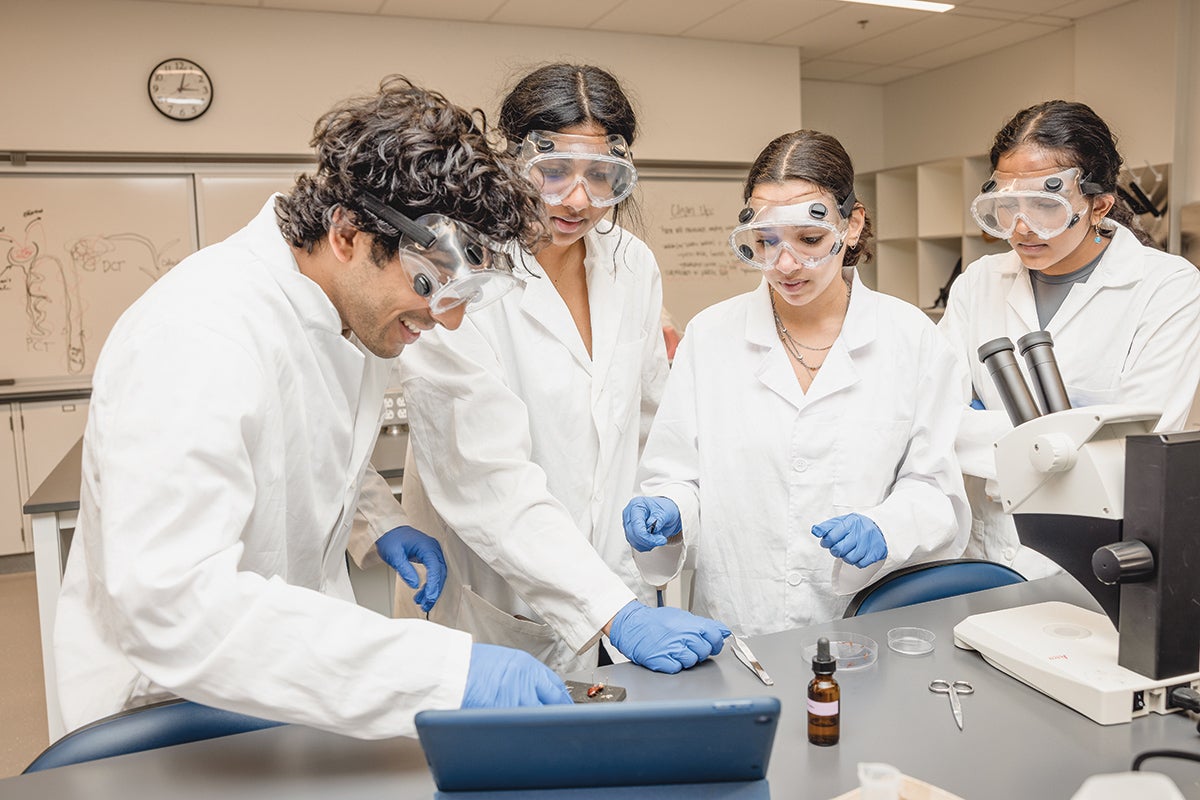 Photo by Matt ShifflerDuring a lab-based biology class, Nikhil Vallikat, Niha Gajula, Maya Moorthy and Ananya Bandaru conducted an experiment to better understand complex physiological interactions.
Photo by Matt ShifflerDuring a lab-based biology class, Nikhil Vallikat, Niha Gajula, Maya Moorthy and Ananya Bandaru conducted an experiment to better understand complex physiological interactions.The Lab Experience with a 'Wow Factor'
A new 30,000-square-foot biology lab space is giving Case Western Reserve University undergraduates unprecedented experiences conducting real and complex research.
They include Nikhila Juluri, who, during a recent class, used advanced tools to analyze DNA and explore the potential of virus-fighting bacteriophages.
"It feels like genuine research," said Juluri, a rising fourth-year pre-med neuroscience and computer science major. "We're not just memorizing facts, we're making our own discoveries."
That's exactly what was envisioned for the $16.4 million facility, which debuted in the fall and is also designed to cultivate interdisciplinary teamwork.
The space includes new laboratory classrooms, collaborative areas and cutting-edge technology.
"There's a real 'wow' factor when you walk in," said Michael Benard, PhD, chair of the Department of Biology. "We wanted a space where students feel inspired and can explore the possibilities of research."
More than 1,200 students—mostly undergraduates—are expected to use the space each semester. "I love how we ask questions one day and run experiments the next," Juluri said. "It changes how we learn."
"We're not just memorizing facts, we're making our own discoveries."
— Nikhila Juluri, a rising fourth-year pre-med neuroscience and computer science major.
— DANIEL ROBISON
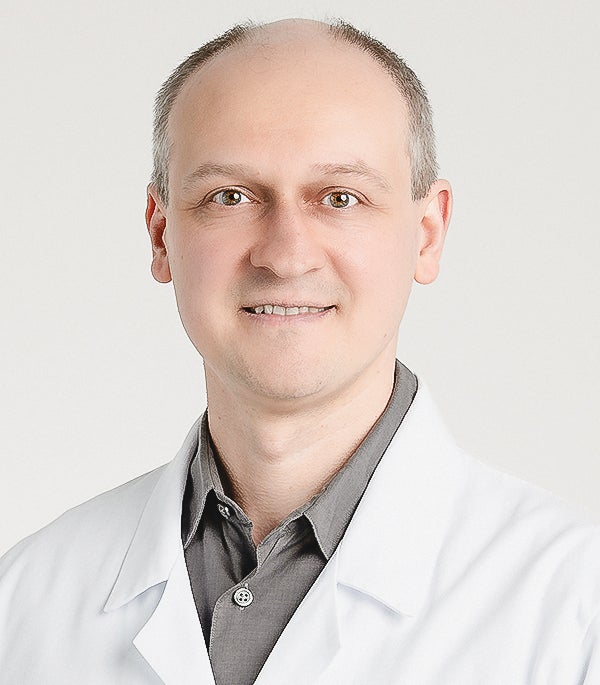
Andrei Maiseyeu
A CWRU-led Discovery May Lead to More Effective Treatment for Cardiovascular Disease
To reduce the risk of atherosclerosis—a potentially deadly condition in which plaque clogs arteries—healthcare providers often recommend medications and lifestyle changes.
But medications don't completely protect patients from cardiovascular risk, and some patients find it challenging to follow diets long term that are low in cholesterol and fat.
Now, a Case Western Reserve University-led team of researchers has identified a new target to treat atherosclerosis.
In a recent study, published in the journal Cell Reports, they described an inflammation-reducing molecule called itaconate (ITA), which is naturally produced in the human body by certain types of cells, such as macrophages. It could be the foundation of a new approach to treat atherosclerosis.
"We've found that itaconate is crucial to the diet's ability to stabilize plaques and reduce inflammation, which has been a mystery until now," said Andrei Maiseyeu, PhD, an associate professor at CWRU's School of Medicine. "This discovery marks a major leap forward in the understanding of how diet-induced plaque resolution occurs at a molecular level."
Maiseyeu and his team are developing a treatment shown to be effective in laboratory testing that allows ITA to accumulate in plaque and bone marrow, where it reduces inflammation and mimics the beneficial effects of a healthy diet.
They are now developing it in pill form with a goal of testing it in a clinical trial in the near future.
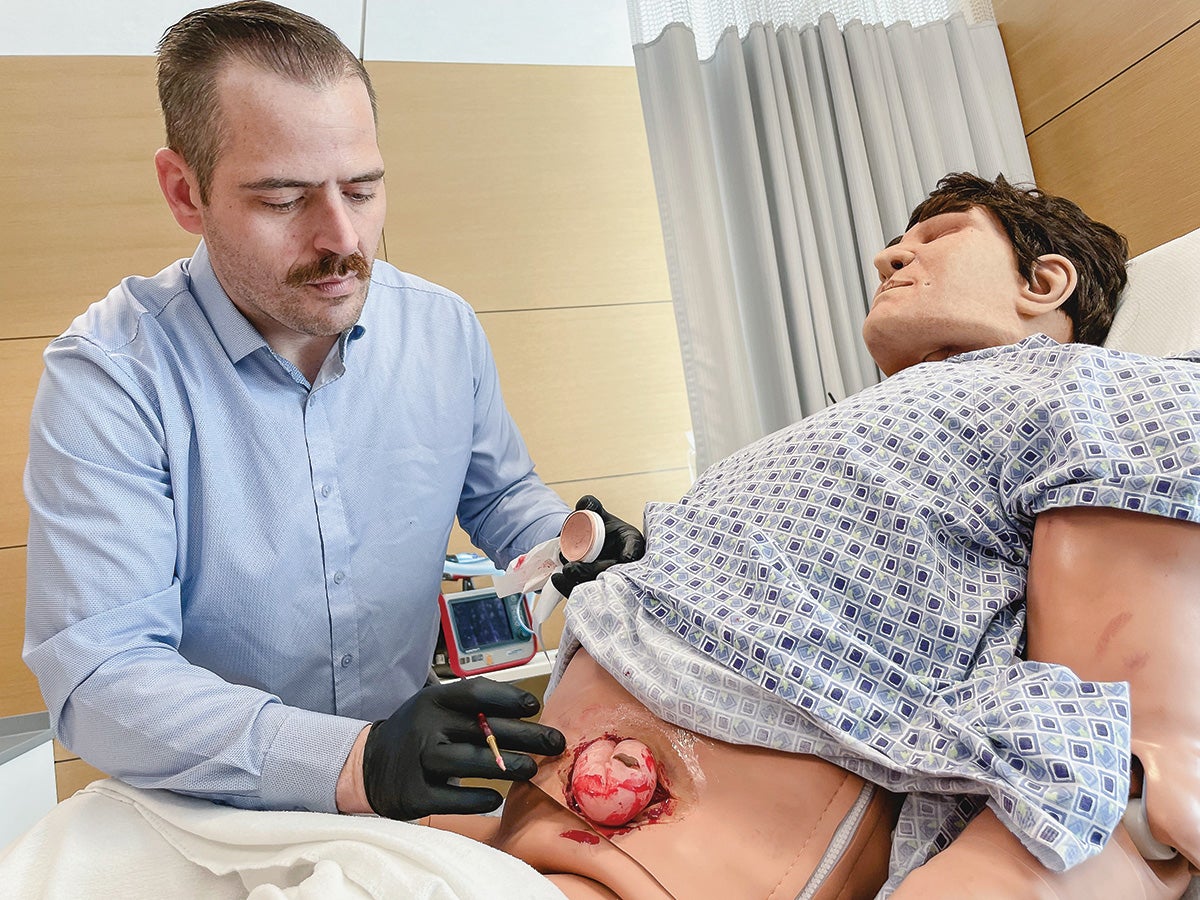
Tom Baum adds realistic injuries and conditions to high-fidelity patient-simulation manikins to help educate students at the Case Western Reserve University Frances Payne Bolton School of Nursing.
A Master of Moulage
Tom Baum stood in a campus simulation lab for nursing students, adding thick, syrup-like fake blood to a high-fidelity patient-simulation manikin. With the skill of a practiced artisan, he created the appearance of a small intestine protruding through the skin to mimic an abdominal hernia.
"It's about finding a creative solution that pushes experiential boundaries in the lab," said Baum, director of simulation and programming at Case Western Reserve University's Frances Payne Bolton School of Nursing.
With diverse technical skills and real-world insights—including experience as a firefighter and paramedic—Baum is a master of moulage, the art of making realistic injuries and conditions for training scenarios. And with a team of five, he is helping transform nursing education at CWRU through ingenuity and resourcefulness.
"Overall, my core nursing skills are really being developed in the best possible ways they could in the simulations Tom is creating," said Claire Linos, who worked in the simulation lab and graduates in May with a Bachelor of Science in Nursing degree.
— MATT MERCHANT
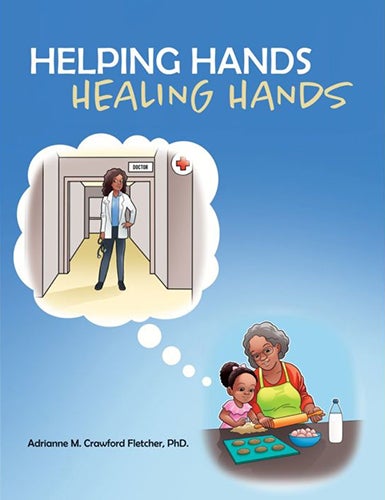
Faculty Books to Empower Children
Inspiring children to dream big and help others are the themes of two books recently published by faculty members at Case Western Reserve University's Jack, Joseph and Morton Mandel School of Applied Social Sciences.
Adrianne Fletcher, PhD (SAS '05), wrote Helping Hands, Healing Hands (Kendall Hunt Publishing Co.) for children ages 4 to 8. A Spanish-language version was also published: Manos Que Ayudan Manos Que Sanan.
The book "is about family engagement, work ethic and planning for the future," said Fletcher, an assistant professor at the Mandel School and vice dean for academic community engagement at the School of Medicine. "Caring and invested adults can help children think about not only what kind of work they want to do one day, but also what kind of person they want to be when they grow up."

Megan Holmes, PhD, wrote and illustrated Dream Big: A Coloring Adventure for Girls (Four Generations Publishing). The book celebrates girls of different races, body types and physical abilities, and shows them involved in activities that underscore strength, joy and confidence.
"Rather than focusing solely on differences, I aimed to convey the shared qualities that connect us all, making the book feel inclusive and affirming for everyone," said Holmes, a Mandel School professor and co-director of the school's Center on Trauma and Adversity.
High Ranking for International Law Programs
Case Western Reserve University's School of Law received a top ranking from preLaw magazine for its international law program. This marks the seventh consecutive year the school received an A+—and it was one of just 12 schools this year to achieve that ranking.
The school's international law program also was among the top 13 in the 2025 U.S. News & World Report Law School Specialty rankings.
The winter 2025 issue of preLaw magazine highlighted the strength of the school's experiential offerings, including its new International Development Law Lab. The lab launched last fall and focuses on social impact investing in the Global South. Students in the lab gain hands-on experience providing clients with pro bono legal research and guidance and other services.
"We are excited to see our international law program receive this kind of recognition," said Michael Scharf, JD, the school's associate dean for Global Legal Studies and the Joseph C. Hostetler - BakerHostetler Professor of Law. "It is truly one of the jewels of the law school and university."
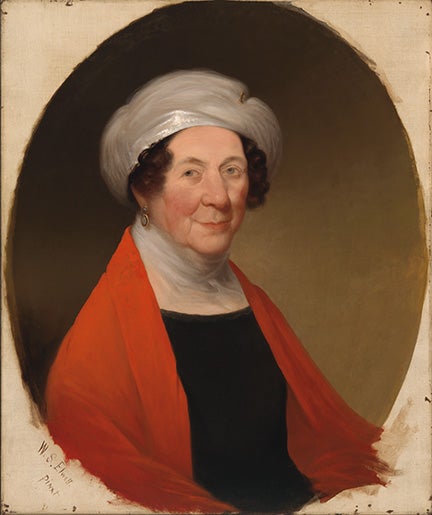
Dolley Madison Image by 1848; NATIONAL PORTRAIT GALLERY, SMITHSONIAN INSTITUTION
CWRU Faculty in the News
On topics from gut health to federal policy, Case Western Reserve University faculty are trusted experts in the news. From the start of the academic year through mid-April, news media outlets featured more than 300 faculty members in more than 600 stories—from front pages to primetime broadcasts. Below are some examples:
"Every First Lady tries to instill her own personality into the position … Martha [Washington] helped popularize the patriotic style of homespun, and Dolley Madison, maybe our first fashionista FLOTUS [First Lady of the United States], started a trend for wearing Turkish turbans, which became her trademark."
— Einav Rabinovitch-Fox, a history lecturer in the College of Arts and Sciences, widely interviewed on the intersection of politics and fashion. This quote is from a story in The Daily Mail on the evolving dress of first ladies.
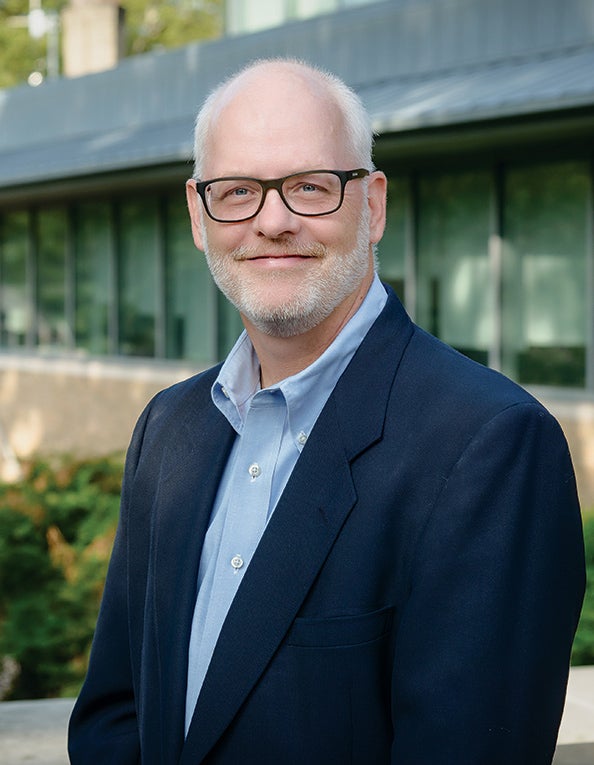
Daniel Flannery
"You can't put the same program in 10 different schools that are very different and expect it's going to work the same way. You need the adult, the mentor, the coach, the teacher that took an interest in you ... which is why this is so hard to just say, 'Hey, if we did these three things, everything would be better.'"
— Daniel Flannery, PhD, director of the Begun Center for Violence Prevention Research and Education at CWRU's Jack, Joseph and Morton Mandel School of Applied Social Sciences. Flannery spoke to National Public Radio for a story about efforts to curb youth violence.
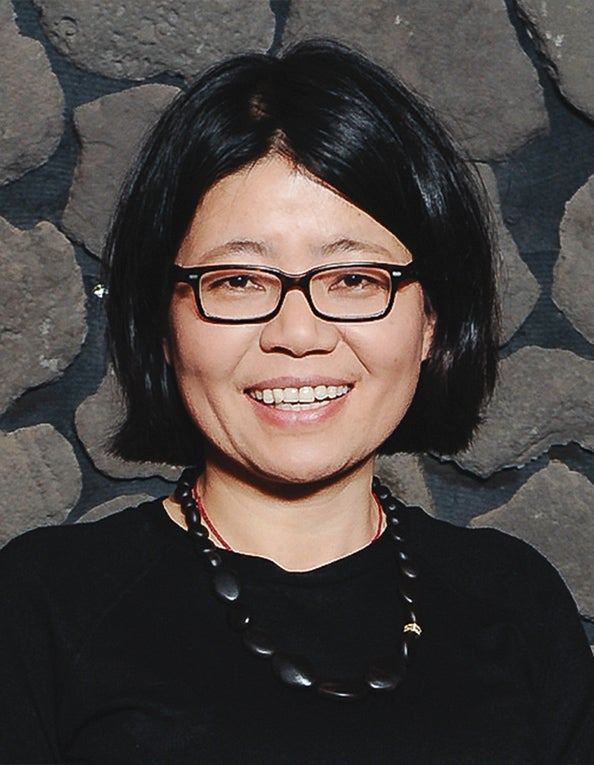
Rong Xu
"It's like one stone, multiple birds."
— Rong Xu, PhD, professor of biomedical informatics and director of the Center for AI in Drug Discovery at the School of Medicine, in The Wall Street Journal, discussing research she co-leads on the many health benefits—from weight loss to reduced cancer risks—of semaglutide, the active ingredient in popular weight-loss and diabetes drugs such as Ozempic and Wegovy.
Renovated Simulation Clinic Is Transforming Dental Training
At the Case Western Reserve University School of Dental Medicine's recently renovated Simulation Clinic, rows of realistic patient-simulation manikins—complete with imitation lips, cheeks and built-in suction—are seated at workstations stocked with the latest in dental technology.
Even without actual human patients, the space hums like a busy dental practice.
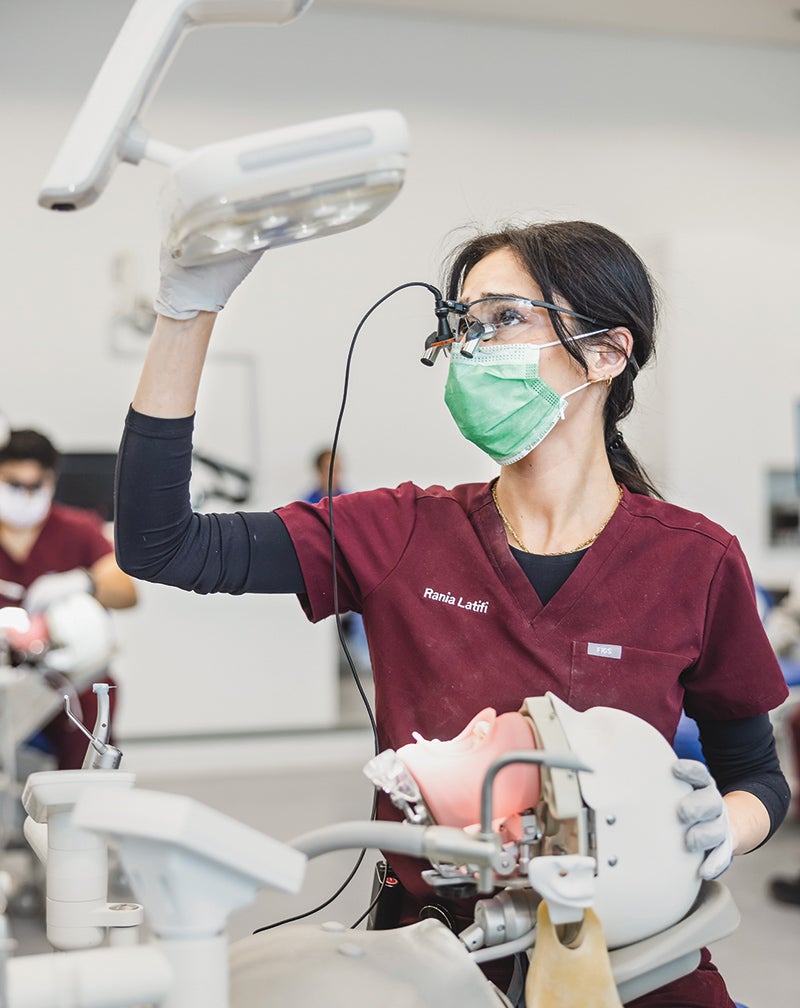
Photo by Matt ShifflerA student prepares to work on a patient-simulation manikin at the School of Dental Medicine's renovated Simulation Clinic.
First-year student Ava Krensky and her classmates take turns drilling and refining foundational techniques—skills that, until recently, were practiced on much simpler setups.
"When you're drilling, it feels almost like a real patient," Krensky said.
Opened in August, the $2.6 million facility—funded largely through philanthropy and in-kind donations—has brought a major upgrade and state-of-the-art tools to the school's preclinical curriculum.
It also allows third- and fourth-year students to master skills they've observed and practiced under supervision in the main patient clinic.
The dental school said the Simulation Clinic is one of the most advanced in the country.
"We're determined to be at the forefront of dental education," said Kenneth Chance, DDS (DEN '79), the school's dean. "Our objective is to ensure our graduates are ready to deliver high-quality care from their very first day with patients."
— DANIEL ROBISON
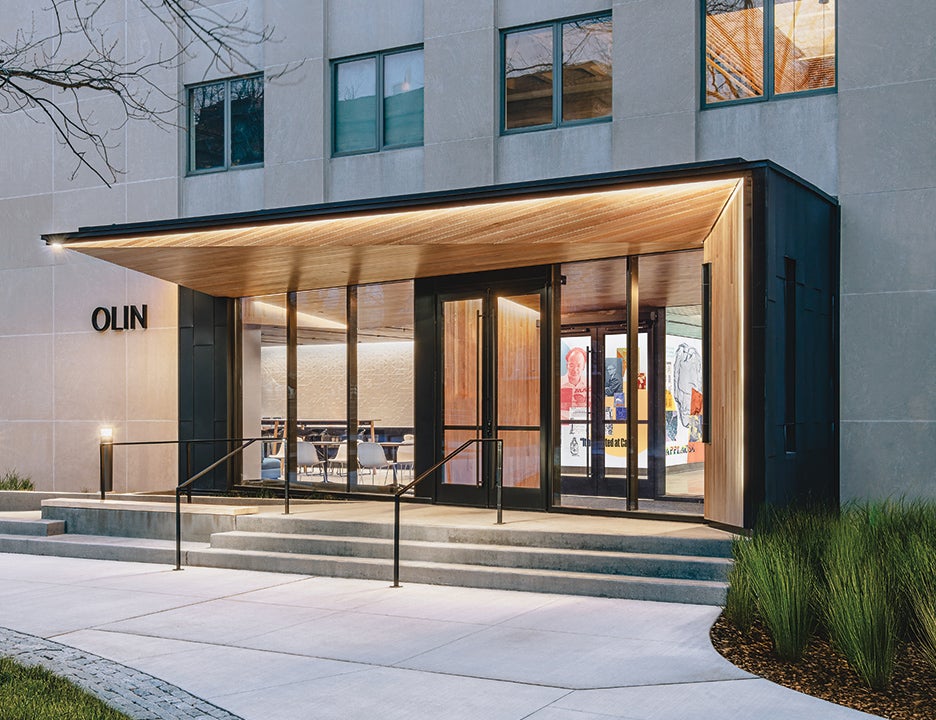
Photo by Field Studio The renovation of Olin Hall includes a new front entrance
A Refresh for the AI Era
With its main entry set back and off to one side, Olin Hall always had an unassuming exterior that belied the significant work within. But a recent renovation made the campus building stand out—just in time to welcome more students in fast-growing programs.
The stone-faced, eight-story building is home to the Department of Computer and Data Sciences (CDS), which saw enrollment surge by about 60% during the past two years—to 1,089 students, mostly undergraduates with CDS majors and minors. The reason: growing interest driven by the department's specialty in artificial intelligence.
The $6.6 million update, sparked by a $1.5 million gift from Kevin Kranzusch (CWR '90), vice president of the technology firm Nvidia, helps address the growing needs.
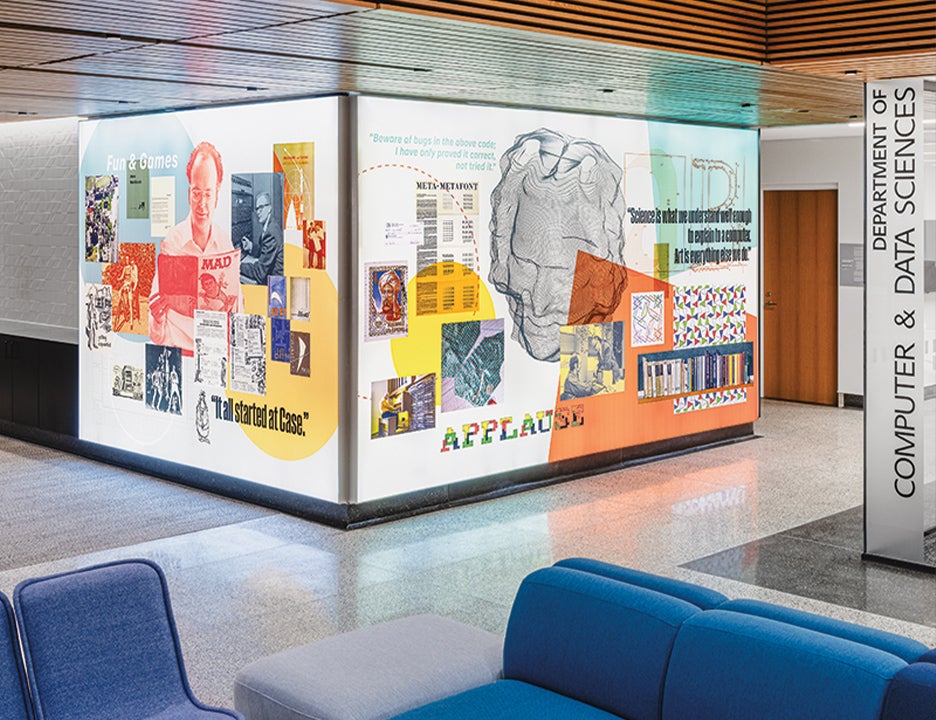
Photo by Field Studio Olin Hall's entrance-level display showcasing alumnus Donald Knuth.
Olin's new Case Quad-facing entrance is front and center. It opens to a bright two-story lobby with a fun, colorful display showcasing Donald E. Knuth, PhD (CIT '60; GRS '60, mathematics; HON '80), during both his years on campus when he met his future wife and artistic collaborator, Jill Carter Knuth (FSM '61), and the illustrious career that followed.
Additions on three other floors include more Knuth-inspired art, two classrooms, a research lab, a graduate-student collaboration space, a student lounge and more.
A version of this story first appeared in Case Alumni Association's Case Alumnus magazine. Read about the art in Olin developed from patterns alumnus Donald Knuth created.

Richard Boyatzis
Creating Change for Good
Richard Boyatzis, PhD—a longtime expert in leadership, emotional intelligence and behavioral change—has published his magnum opus: The Science of Change: Discovering Sustained Desired Change from Individuals to Organizations and Communities (Oxford University Press).
The book details his "Intentional Change Theory," composed of 10 principles that describe a process with five phases, said Boyatzis, a Distinguished University Professor at Case Western Reserve University's Weatherhead School of Management.
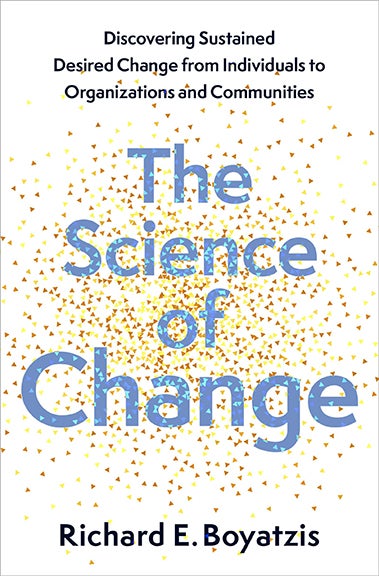
He said it is unique because it is the only "multilevel theory of human change"—meaning that sustained, desired change occurs with the same process whether those working on change are individuals, teams, organizations, communities or countries.
Boyatzis' approach to change also challenges traditional practices that focus on goal setting or problems, which he said actually make individuals and groups disinclined to change. Instead, his neural and behavior research shows that the real driver of sustained change is vision, a sense of purpose and collective vision.
"Change is hard," Boyatzis said. "But when it occurs, it is magical."





